Home » Posts tagged 'legend'
Tag Archives: legend
“On Fairy-stories”
J. R. R. Tolkien
1938
(The realm of Faërie is no frivolity, but a place of profound enchantment, offering glimpses into deep mysteries and addressing fundamental human desires.)
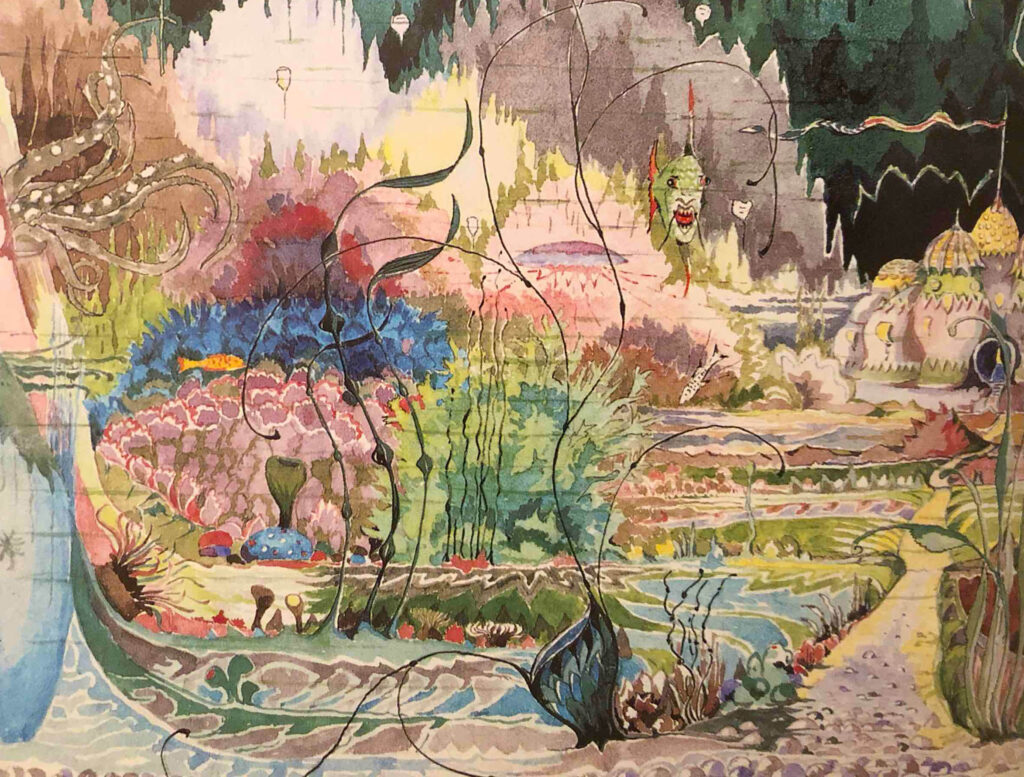
“Lies, though breathed through silver”. It was September 1931. Little could J. R. R. Tolkien have guessed that this insult of myth, from the mouth of his hard-headed friend C. S. Lewis, would spur him to a rebuttal that would blossom into the most sustained and thoughtful argument for the value of fiction in the history of literature. And, while we’re at it, little could Lewis have guessed that Tollers’ argument, as they walked in a park behind Magdalen College, Oxford, would plant a mustard seed that would eventually transform Lewis into a myth-maker himself, not to mention the most celebrated writer on God (that myth of all myths) in the twentieth century. What was that argument? What path could possibly carry a wayfarer from the valley where myths are childish propaganda, to the hilltop where they are powerful elicitors of fleeting joy and hint at truths beyond our comprehension?
Hippolytus
(Ἱππολυτος)
Euripides
429 BC
(Disaster ensues when Phaedra falls for her stepson!)
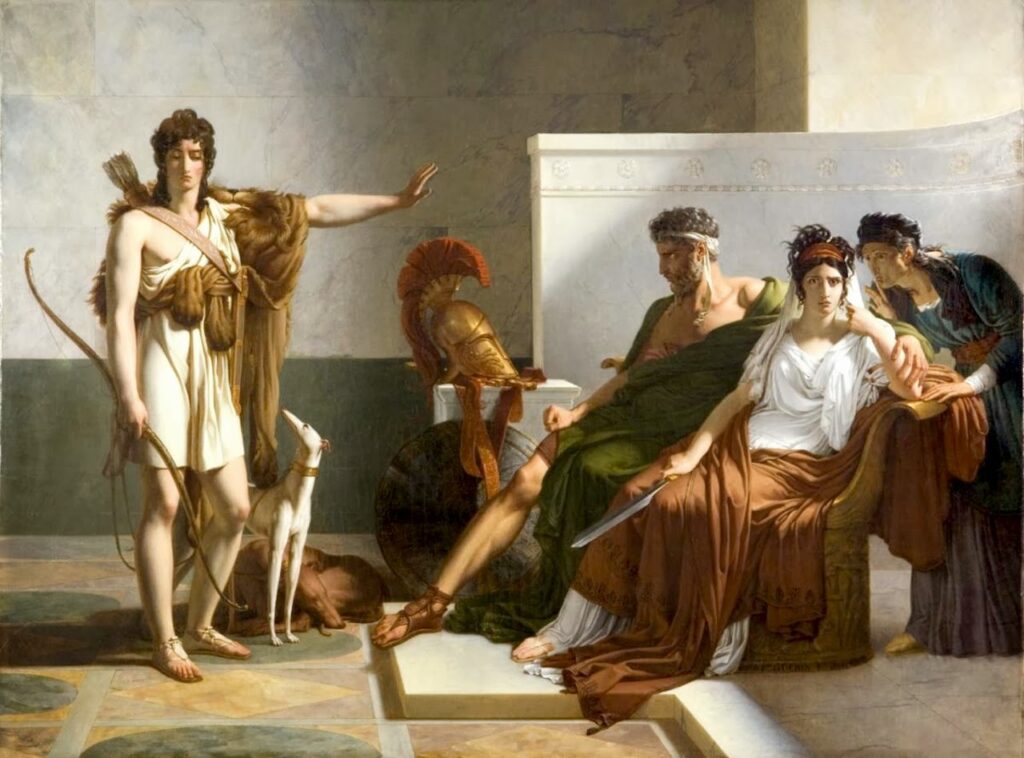
The gods will have their play, and we piteous humans must suffer in double jeopardy. First, vice will eventually bring destruction, and yet we are by nature weak and prone to vice. Second, everyone is subject to fate, which is not kinder to good people than to bad. So we are doomed—we cannot be virtuous as we want to be, and so we are in trouble; and yet even if we could be virtuous we would get smacked anyway by the vicissitudes of fate! Hence Euripides’ fist-waving at the gods… yet he manages to preserve some reverence. Artemis tells us that the pious are still much more highly regarded by the gods than the impious. When the impious person suffers, the gods nod “take that!”, whereas the faithful incur their favor, which can bring some benefit. So, given our sad lot in life, it is better to be suffering and good than suffering and evil. Or that is Euripides’ line anyway. In this play we see how this web of cosmic influences plays out in the life of a chaste and honorable man destined for greatness by rights, when (through no fault of his own) his stepmother takes an improper liking to him.
The Hound of the Baskervilles
Arthur Conan Doyle
1902
(The scientific minds of Holmes and Watson are tested by howls on the moor, the legend of a fiery hell-hound, and a giant pawprint next to a dead nobleman.)
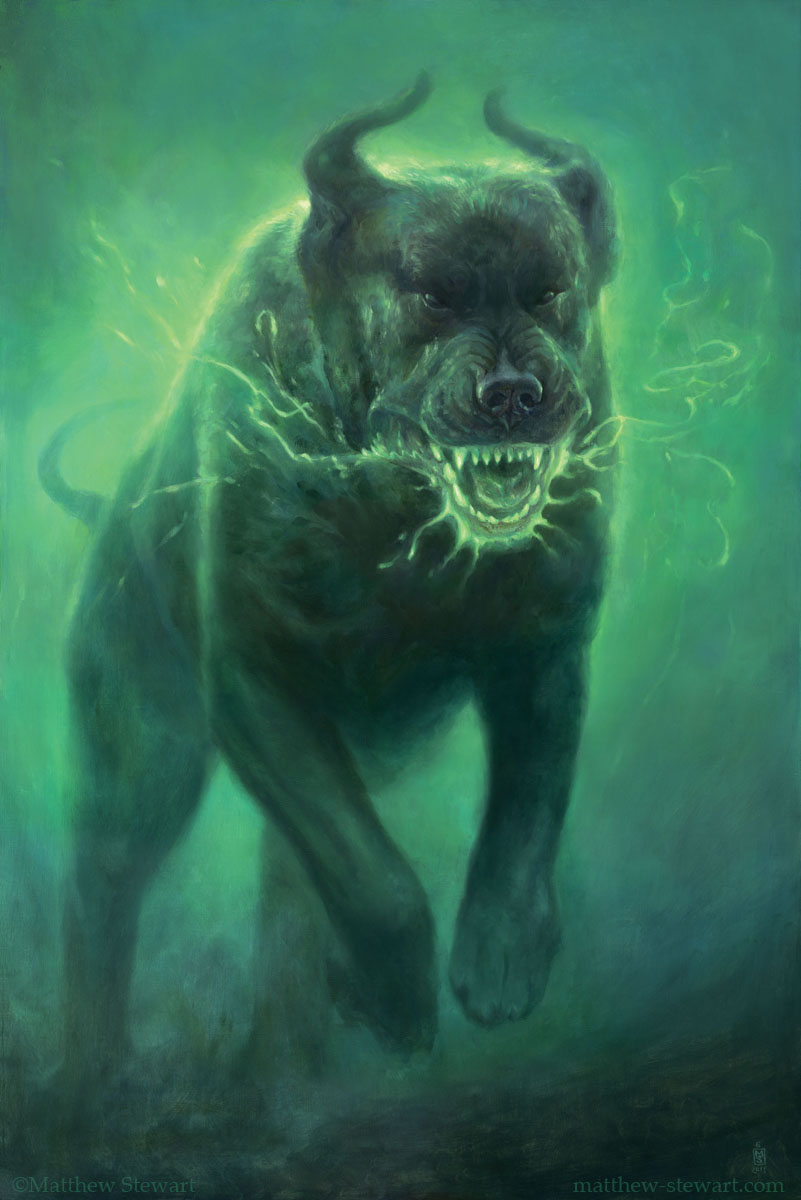
A novel-length Sherlock Holmes mystery! The readers of the Strand Magazine must have been delighted. They must have vigorously discussed with each other the prospects of the case between installments. Releasing a detective story by degrees has got to be risky, since the readers have so much time to figure everything out. There are enough threads interwoven in this story, though, and enough minor details that must be incorporated into a solution, that I suspect almost everyone will be surprised at something in the denouement. Besides, we would need a healthy dose of luck to solve the riddle ourselves, for there are crucial elements about which we can only guess during the narration. These are revealed to us only after Holmes has discovered them and solved the case in his mind. In this way, Doyle all but ensures that competition with the sleuth is beyond our grasp.
Although the most haunting aspect of the typical Sherlock Holmes case is nothing more than the dense fog of pipe smoke around the detective’s chair, Doyle did have an interest in spiritualism, and wrote a few books on the subject. In The Hound of the Baskervilles he combines these two interests by infusing the tale with a strong atmosphere of macabre otherworldliness. Probably more than the facts of the case or its solution, the damp darkness and chilling moans of the moor are likely to remain with us long after we have finished reading the book.
The Travels
(Il Milione)
Marco Polo
(with Rustichello of Pisa)
1299
(An Italian explorer treks fearlessly into the unknown East, and discovers astonishing cultures and kingdoms no European had ever seen).
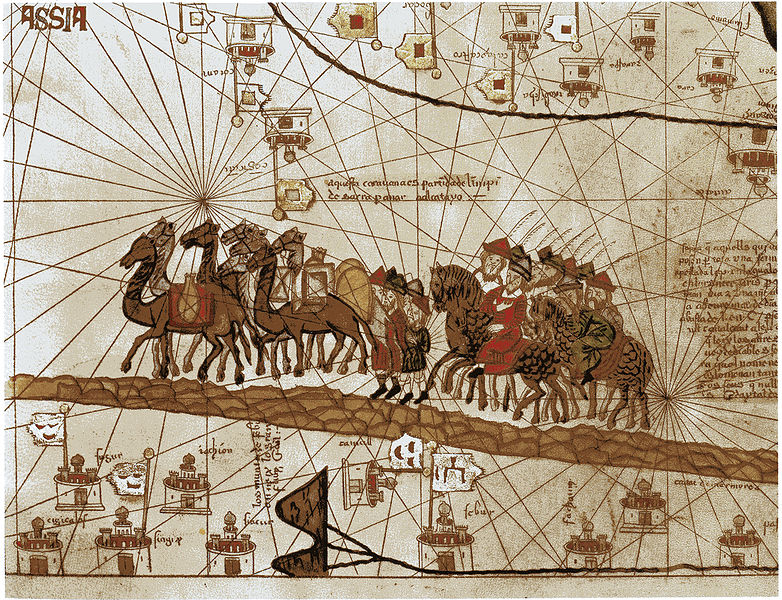
We are fortunate that Marco Polo lived long enough and expended the energy to record the greatest travels ever performed by any man to his time and for very long afterwards. He dictated– apparently from memory– his adventures to a romance-writer Rustichello of Pisa while they were prisoners of war in Genoa. No repetitive or trivial diarizing here—this is a very entertaining work, often fascinating and at times hilarious. I am struck, as Polo was, by the variety of customs observed in the many areas through which he trekked. I am also intrigued by the amount of wealth those in power were able to amass; such wealth that Kublai Khan, for the prime example, could romp in several sumptuous palaces with manicured grounds and scenic paths like those of the richest modern European monarch. It surely seems that the book’s two repeated claims may well be true: that Marco Polo had traveled further and knew more of the world than any other man who had ever lived; and that the Mongol empire under Kublai Khan was the largest empire in subjects and geographical area ever to have existed.
The Romance of Tristan and Iseult
(Le Roman de Tristan et Iseut)
Joseph Bédier
1900
(A knight and a lady pursue their magical love through bloodshed and sorrow.)
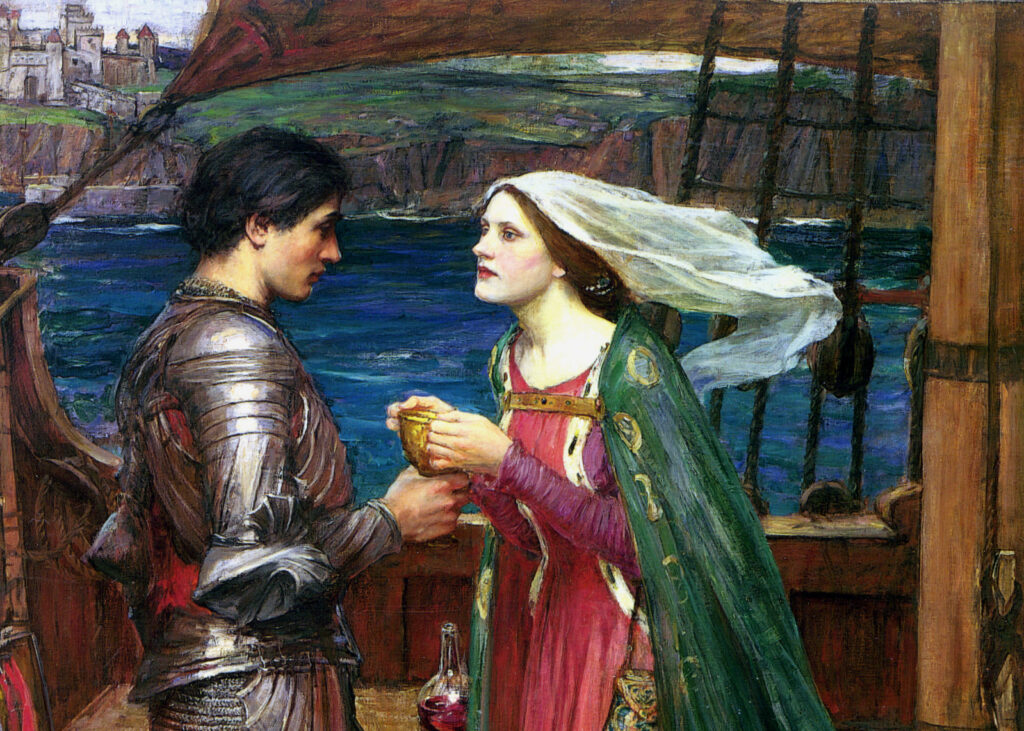
When tales pass through centuries of retellings, they tend to become what of audio media we would call “overproduced”: too many interpreters have slanted the story their various ways, too many embellishments and new episodes have been inserted, too many accommodations and updates have aimed at suiting the fancies of each audience. In the process the story can lose some of its grip on our imagination and our romantic sensibilities. It can be so cobbled and abused that we are left to distill the heart of it as best we can from a variety of sources. The only way such a beautiful old tale could ever be told today in anything like its original form and spirit, would be for three literary virtues to unite: a single author must be simultaneously an expert scholar, a great poet, and above all, modest. Only a scholar will know the history of the work; will be able to distinguish the wheat from the chaff in elements of theme, characterization, and plot; and will sufficiently understand an ancient teller’s perspective so as to effectively reproduce it. And only a great poet will be able to convey this perspective, and the story itself, with convincing unity and supreme skill; expectations of quality and beauty are lofty when we pick up a beloved and popular story. And finally, many a great poet and scholar will have great pride as well, in which case there will be too much of the writer and not enough of the legend in the text. Granted, we love our authors’ egos when it is them we want to see; but if the aim is to represent something of the original (or at least old) character of a romance, an author must exercise admirable self-control. We can thank Joseph Bédier for being this author in all respects for the legend of Tristan & Iseult.


